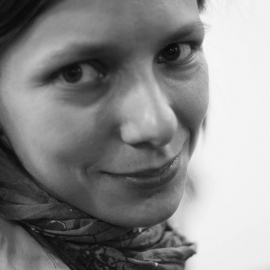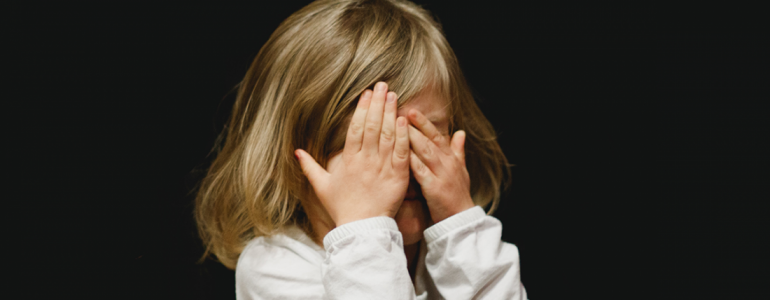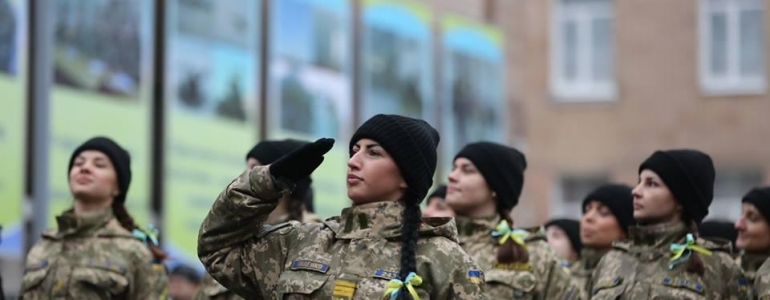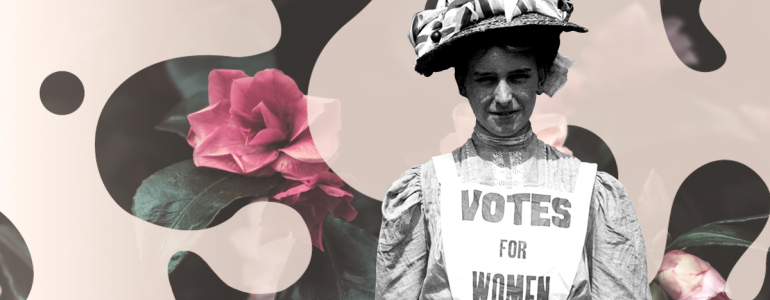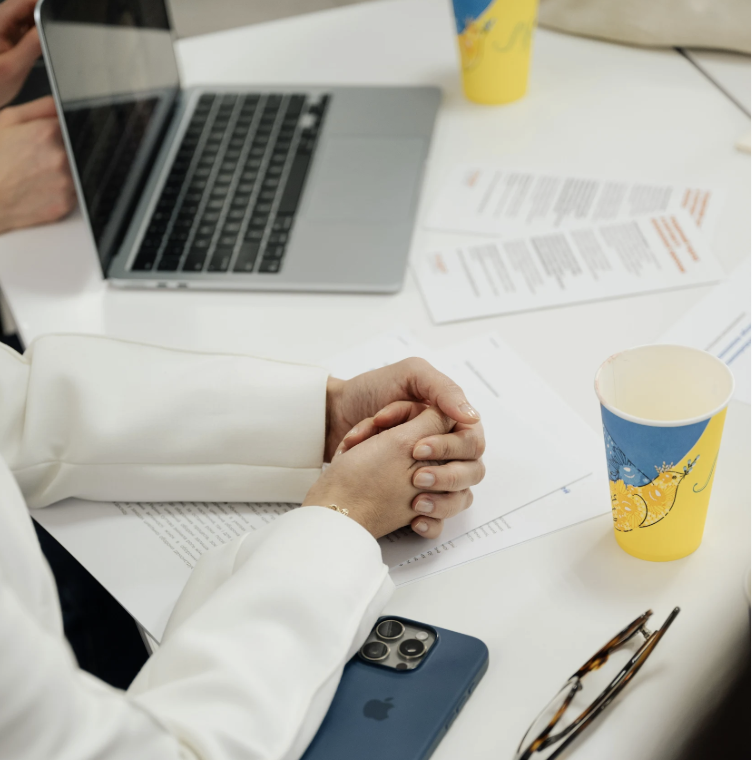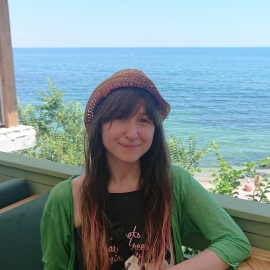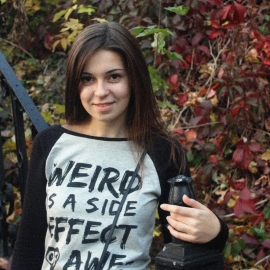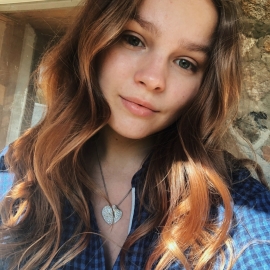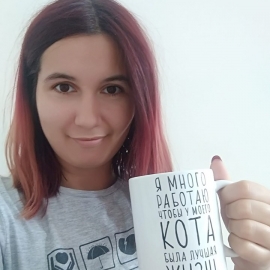Translated from Ukrainian by Iryna Malishevska.
Is it time for optimism yet? Over the past five years, many talented women have become active in Ukraine’s public space and politics; gender equality is discussed in all areas of public life; and there have been several important legislative innovations. However, according to the annual Global Gender Gap Report, Ukraine ranked 65th out of 149 countries in 2018 (read more in this article on Gender in Detail). Gender equality in the country has improved 1% since 2014 (70% versus 69%, where 100% = complete gender equality) and 3% percent since 2006[1]. This is slightly better than the global average (68%), but progress is consistently low.
In the 2019 Women's Security and Peace Index, released by the Georgetown Institute for Women, Peace and Security (USA) in collaboration with National Geographic, Ukraine was ranked 105th out of 167. Despite the obvious shortcomings in calculating this index, there is apparent room for improvement.
It takes time to create structural factors that can significantly change political and economic indicators of gender (in)equality in Ukraine and significantly improve the country’s position in international rankings. Since Euromaidan more substantial progress is being made. Sociologist Tamara Martseniuk has documented both conservative and emancipatory tendencies present at Euromaidan. The Revolution of Dignity included many processes and was highly diverse, as were the people who supported it. Women were actively ‘making a revolution’ by performing various roles[2].
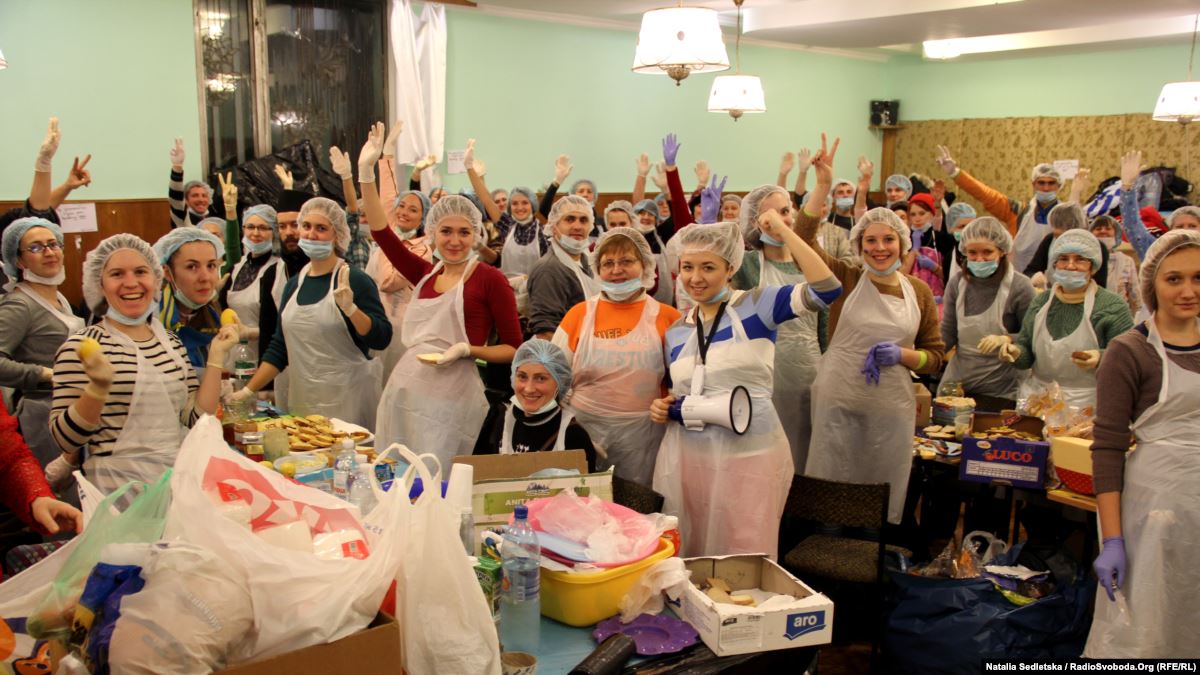

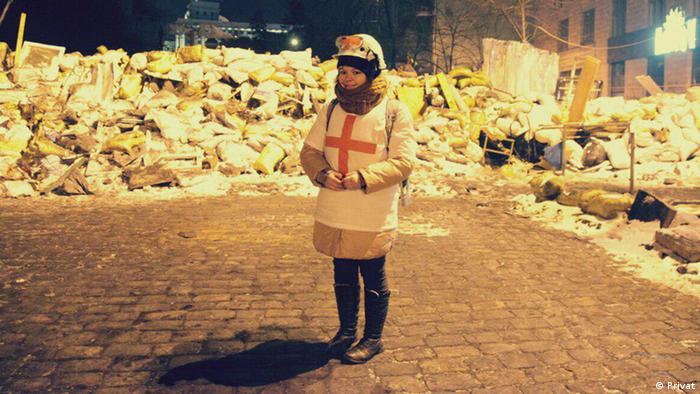
Women on Euromaidan not only performed traditional ‘women's’ activities (kitchen and cleaning), but also took an active part in the construction of barricades, in the armed confrontation, and in logistical, legal and educational assistance, etc.
Emancipatory and egalitarian trends would later manifest in the broad participation of women in the Anti-Terrorist Operation / Joint Forces Operation, the volunteer movement, and other activities.


Because of the dire need for people to work in the military, organize army assistance, human rights protection and other societally significant activities, the number of women in ‘male’ professions increased enormously. This process continues to this day. The front was not the only focus for women: they have gotten actively involved in regional and national politics, becoming deputies, village and city heads, ministers, and officials of different levels. For them, volunteering was often the entry point into politics.
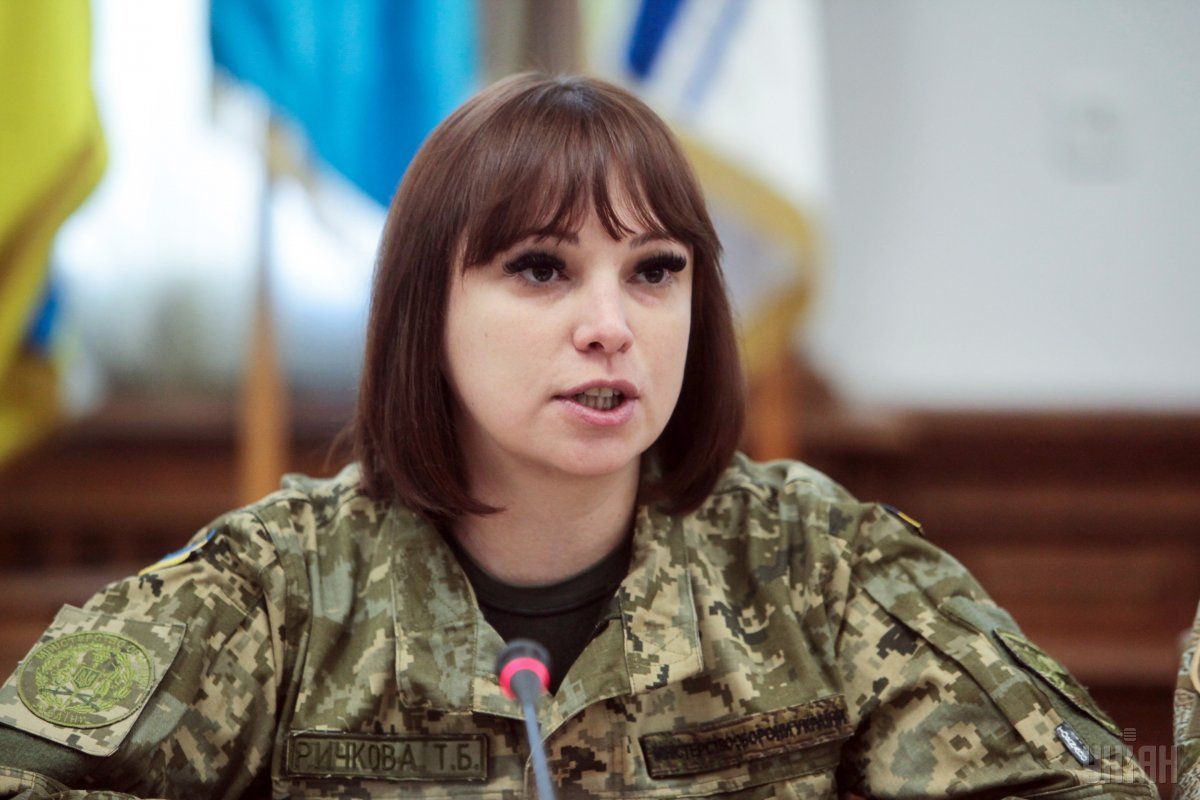

Tetiana Rychkova, MP of Verkhovna Rada of IX convocation, and Ulana Suprun, former Health Minister, began their careers as volunteers
Women's activism and public visibility have spurred a revision of post-Soviet gender models. Philosopher Tamara Zlobina called this process ‘gender disruption’[3]: formerly prevalent ideas of a woman as ‘a keeper of the family hearth’ and ‘a decoration for men's life’, for whom work was ‘not the priority’, began to crumble; at the same time, an emancipated vision of women as full-fledged and equal participants in social, economic and political processes emerged and strengthened.
A shift in male gender roles also began to be discussed. The idea of a bread-winner who is not involved in the household is gradually evolving towards a full partnership in all areas of life.
This social video in support of the Ukrainian army focuses on men’s roles in their private life
Active fatherhood is featured in video commercials more and more often
Tamara Zlobina notes that the old ideas did not disappear all at once: during 2014–2019 we lived in a curious situation of gender eclecticism, with conservative and emancipatory ideas about gender roles existing side by side.

A typical example of ‘gender eclecticism’ from 2015. During the oath of office ceremony of the new patrol police, the women who implemented the reform — Eka Zguladze, First Deputy Interior Minister, and Khatia Dekanoidze, Head of the Police Academy in Georgia, — were presented with embroidered shirts labeled ‘Police Guardian’ and ‘Police Inspiration’.
Essentially Euromaidan resulted in a shift in societal and political attitudes and values that started in 2013–2014 and continues until the present. Feminist changes have become an organic part of the overall process of the democratisation and development of Ukrainian society. Old gender roles are changing and decaying and being replaced by ones that better meet today’s challenges. At the same time, there are ongoing changes in legislation and state policies. The social climate has become more women-friendly, as if ‘terraforming’ is taking place (akin to the terraforming of Mars). I would like to give the most important examples of this change.
SOCIETY
In general, society recognises the issue of equality of women and men as important. According to the National Survey on Gender Equality in Ukraine, conducted by the National Democratic Institute in July 2018, 77% respondents (81% of women and 73% of men) stated that gender equality was important to them[4].
On November 12, 2015, the Verkhovna Rada of Ukraine adopted the Law “On Amending Certain Legislative Acts of Ukraine (on Harmonization of National Anti-discrimination Law to the Law of the European Union”[5]. The new text of the law bans discrimination in access to labor, particularly violations of the principle of equal rights and opportunities and restrictions based on gender, gender identity or sexual orientation.
On December 21, 2017 the Ministry of Health repealed its decree which prohibited women in Ukraine from a list of 450 professions[6]. The list of prohibited professions included metallurgical and underground work, work in timber harvesting, electrical and chemical industries, and many others. This initiative sparked much discussion, but was overall positive; female researchers had repeatedly stated that women worked in heavy labour illegally despite the ban.

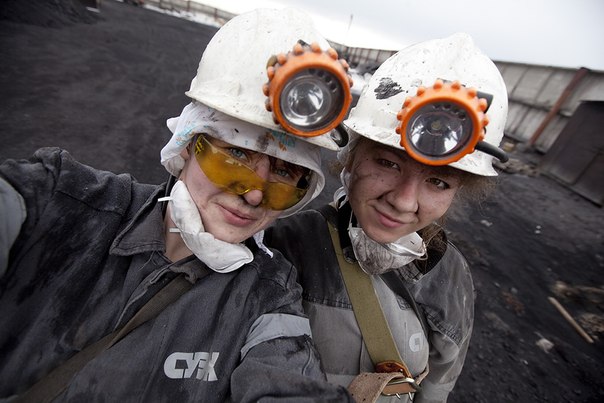
Female miners
The media representation of women and their new gender roles has also changed drastically. A number of specialized media have appeared focusing on gender issues: in addition to Gender in Detail, these include Update, Povaha, 50%, WOMO, and The Devochki. An ‘Ask a Woman’ database of female experts was created to increase the visibility of female experts in the media space. Thanks to the efforts of the ‘Harmony of Equal’ Women's Rights League NGO and other concerned citizens, numerous advertisers have been fined for sexist advertising.
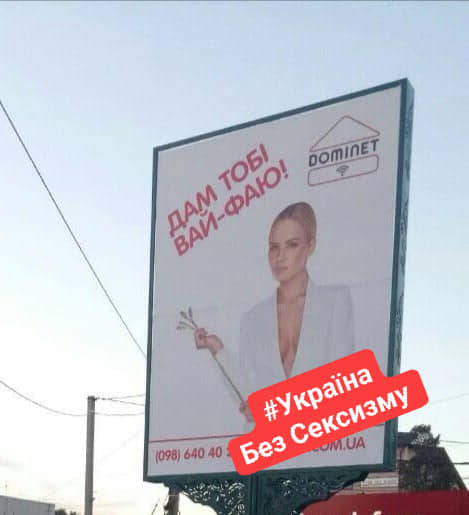
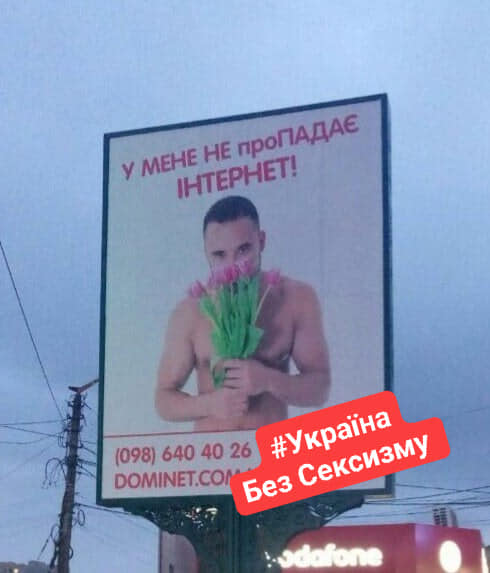
POLITICS
Gender mainstreaming is a political strategy aimed at achieving gender equality. The term refers to (re)organising, improving, developing and evaluating policy processes from a gender-responsive perspective. Part of this process is ensuring women's access to the decision-making process.
Ukraine has shown quite a bit of success in women's representation at the highest levels of government. 19% of the Verkhovna Rada of Ukraine of the IX convocation, elected on July 21, 2019, are women. The previous Parliament was 12% women, and 10% was the Parliament of the VII convocation (elected in 2012). This number alone is not critical and does not guarantee that the parliament will pursue women-friendly policies, but it can serve as an indirect indicator of the pace of disruption of traditional gender roles.
There have been some changes in the way women become members of the Parliament. The version of the Electoral Code that the Verkhovna Rada adopted on July 11 of 2019 introduces a 40% gender quota. In addition, there is a requirement to have both men and women (at least two candidates of each gender) in each of the parties' electoral lists of five names. Parties must comply with these quotas when forming national and regional electoral lists of candidates for parliament. The 40% gender quota will enter into force on December 1, 2023. However, since the next X convocation of parliament will start working before that date, in fact the quota will only be in effect for the elections to the XI convocation, i.e. from 2027.
This decision is a step forward compared with the voluntary 30% gender quota that has been in force in Ukraine since 2013 in accordance with the Law on Political Parties. If this quota is respected in election results, parties receive an additional 10% of annual state funding. Since 2015, the 30% voluntary gender quota has also been applied to local elections. Such changes helped 55,000 women to enter the local councils, as the media reported, quoting MP Svitlana Voytsekhovska[7].
The executive branch also experienced positive changes. On April 5, 2019, the Cabinet of Ministers of Ukraine approved the Concept of State Social Policy for Equal Rights and Opportunities for Men and Women through 2021. In 2017, the position of Government Commissioner for Gender Policy was created. Kateryna Levchenko, president of La Strada—Ukraine NGO, was appointed to this post.
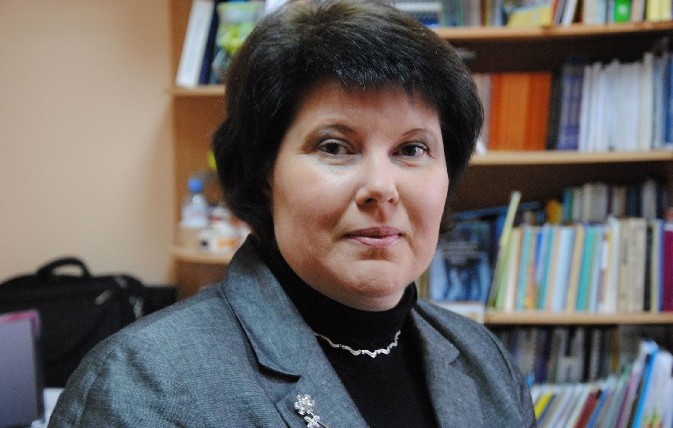
Kateryna Levchenko
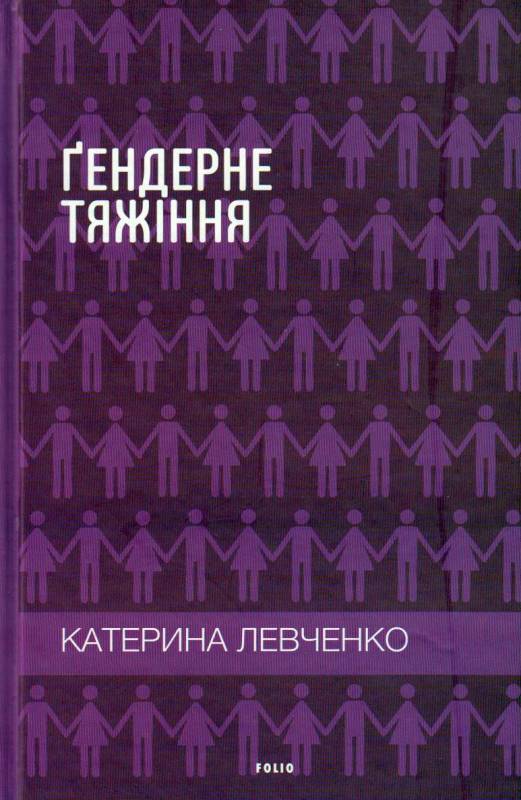
Gender-responsive budgeting, a comprehensive approach to achieving gender equality and increasing the efficiency of the use of budget funds, has been introduced. After analysing how the budget revenues and expenditures affect the social and economic status and opportunities of women and men and gender equality, a more systematic and thoughtful implementation of the principle of equal opportunities for women and men was introduced[8]. However, data on the results of this measure is not yet available.
The composition of the government also demonstrates gender changes. There were two women ministers in the Yatsenyuk government (2014–2016), six women in the Groysman government (2016–2019), and six in the Honcharuk government (2019). Apparently, the famous phrase of former Prime Minister Mykola Azarov, “introducing reforms isn’t women’s business” is no longer relevant.
SECURITY SECTOR
The Invisible Battalion advocacy campaign by female members of the military resulted in major legislative changes.
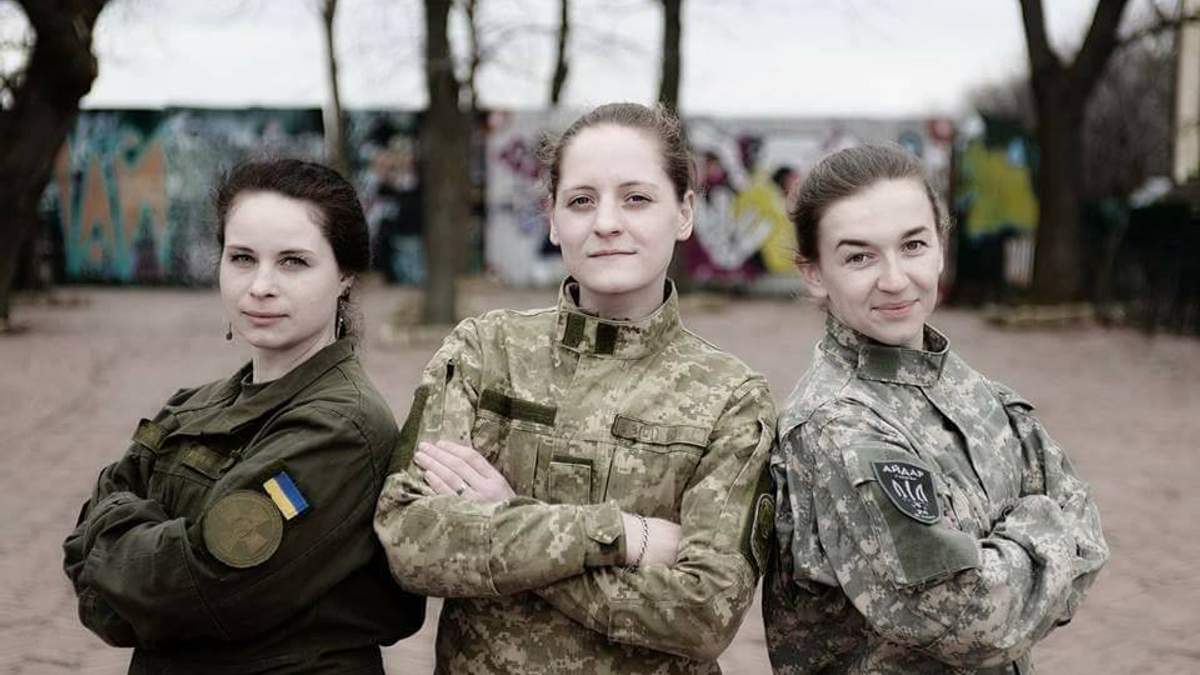
On June 3, 2016, the Ministry of Defence of Ukraine amended the temporary list of staff positions for privates, sergeants and petty officers, approved by Order of the Ministry of Defence of Ukraine № 337 from 27.05.2014. The list of combat positions for female contracted servicemen was expanded significantly—by over 100 jobs. This was a major step towards gender equality in the army, since previously women who actually performed combat tasks were registered “on paper” as paperwork managers or heads of a field bathhouse.
Later the “Equal Opportunities” Inter-factional Parliamentary Association prepared Draft Law # 6109 “On Amendments to Certain Legislative Acts of Ukraine on Ensuring Equal Rights and Opportunities for Women and Men in the Armed Forces of Ukraine and Other Military Formations”. The President of Ukraine signed the law on October 12, 2018. The law establishes a framework principle of equal rights and opportunities for women in the Armed Forces of Ukraine, lifts restrictions on the service of female servicemen in reserve; establishes equal age limits for women and men for enlisting in military service, abolishes all limits for assignment of female soldiers to daily details, as well as being sent on an assignment and participate in military trainings.
There were also other changes, for example, girls were allowed to study in military lyceums. In 2018, Ukraine had its second female general since independence: Lyudmila Shugaley was appointed to the post of Major General of Medical Service.
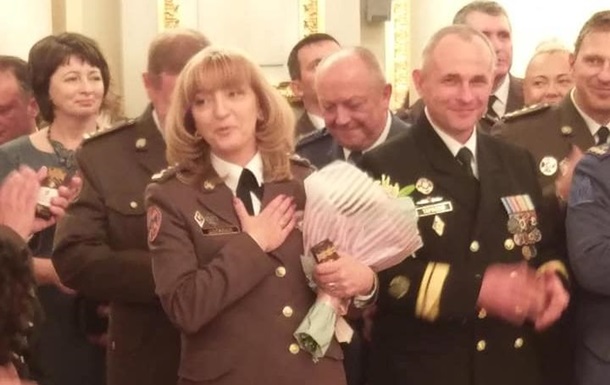
Head of the Military Medical Department of (the Security Service of Ukraine Lyudmila Shugaley
The number of women who serve and work in the Ukrainian Armed Forces has increased. According to official data, over 20,000 women served in the Armed Forces as of summer 2017, i.e. 8.5% of the total military personnel[9]. In just a year their number more than doubled to 55,000[10].
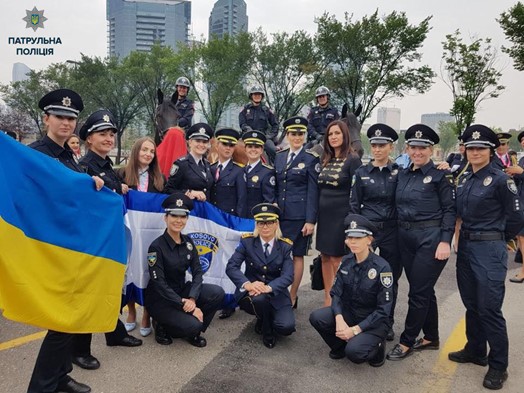
The delegation of the Law Enforcement Representatives on a visit to Canada
Other security sector structures have also undergone changes. In 2015, during the recruitment process to the reformed patrol police, it was announced that both men and women could apply for the job. According to the the National Police official information, as of 2017 the total number of women in the Ministry of Internal Affairs of Ukraine was over 50,000, including roughly 8,000 women in the State Emergency Service, 11,000 in the State Border Guard Service (of which 13% are female officers), over 30,000 in the National Police, and over 4,000 in the National Guard[11].
Women Veterans founded the Ukrainian Women Veteran Movement, an initiative to strengthen women veterans and increase their role in decision-making processes regarding governance, security, and defence.
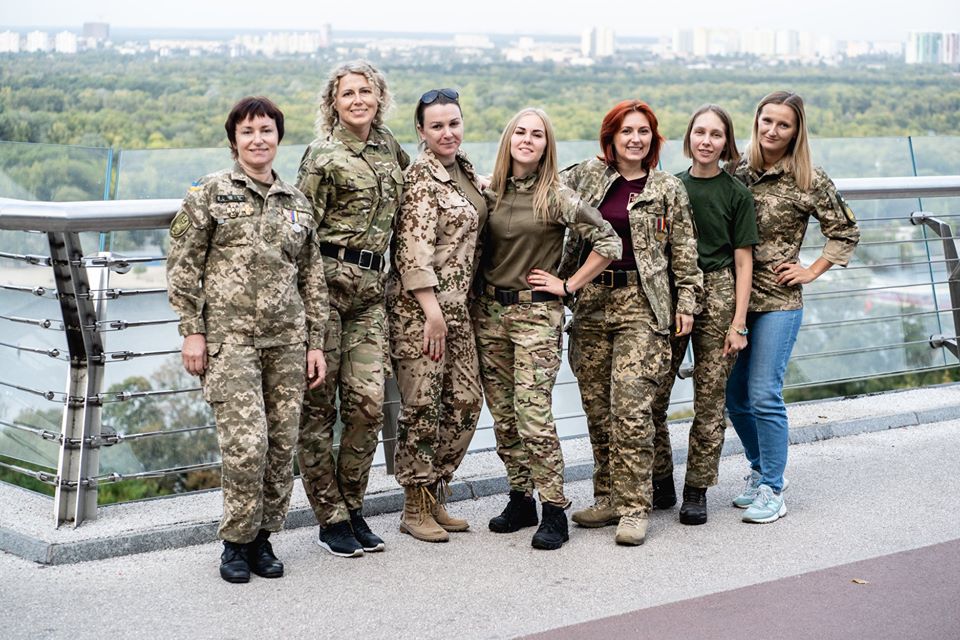
The Ukrainian Women Veteran Movement
Another women’s initiative was a veteran diplomacy campaign. Women veterans travel abroad to present evidence of warfare and share their perspectives. Self-organised initiatives extend beyond the military. For example, in March 2018 the Ukrainian Association of Women in Law Enforcement was established.
On February 24, 2016 Ukraine adopted National Action Plan for the Implementation of UN Security Council Resolution 1325 on Women, Peace, Security through 2020[12]. Ukraine became the first country to adopt such a document during an ongoing armed conflict. In particular, the NAP stipulates that by 2020 the share of women in decision-making positions in the security, defence and law enforcement agencies is to increase to 10%, and the share of female members in negotiation groups is to increase to 30%. The OSCE Special Monitoring Mission to Ukraine, which has been present in Ukraine since 2014, applies gender mainstreaming and gathers information on gender aspects of the military conflict in eastern Ukraine.
The public holiday of the “Day of Defenders of Ukraine” (October 14) has also been evolved. It was recognized that females can also be defenders, and overall the holiday is no longer a replica of its Soviet predecessor, celebrated on February 23.
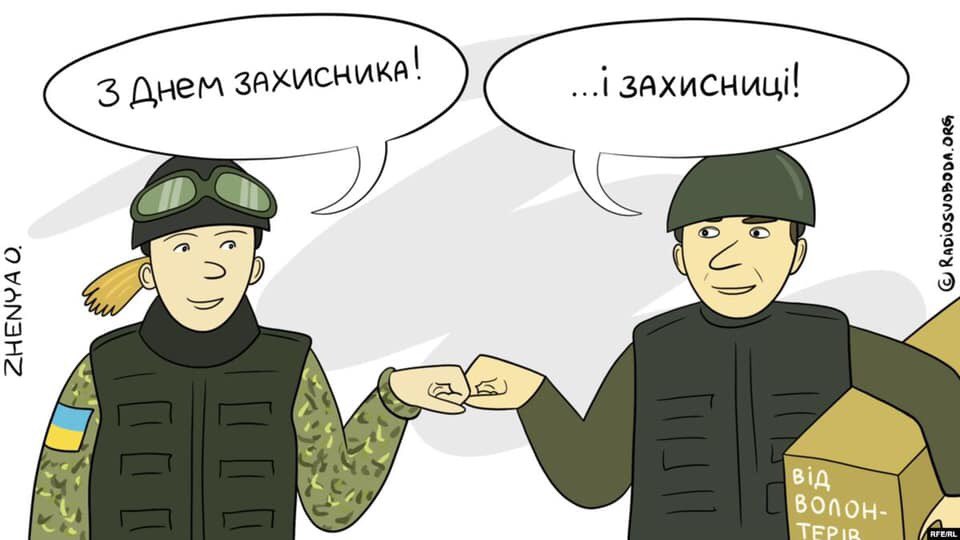
In 2018, for the first time, the Ukraine’s Independence Day parade included a column of female military personnel.
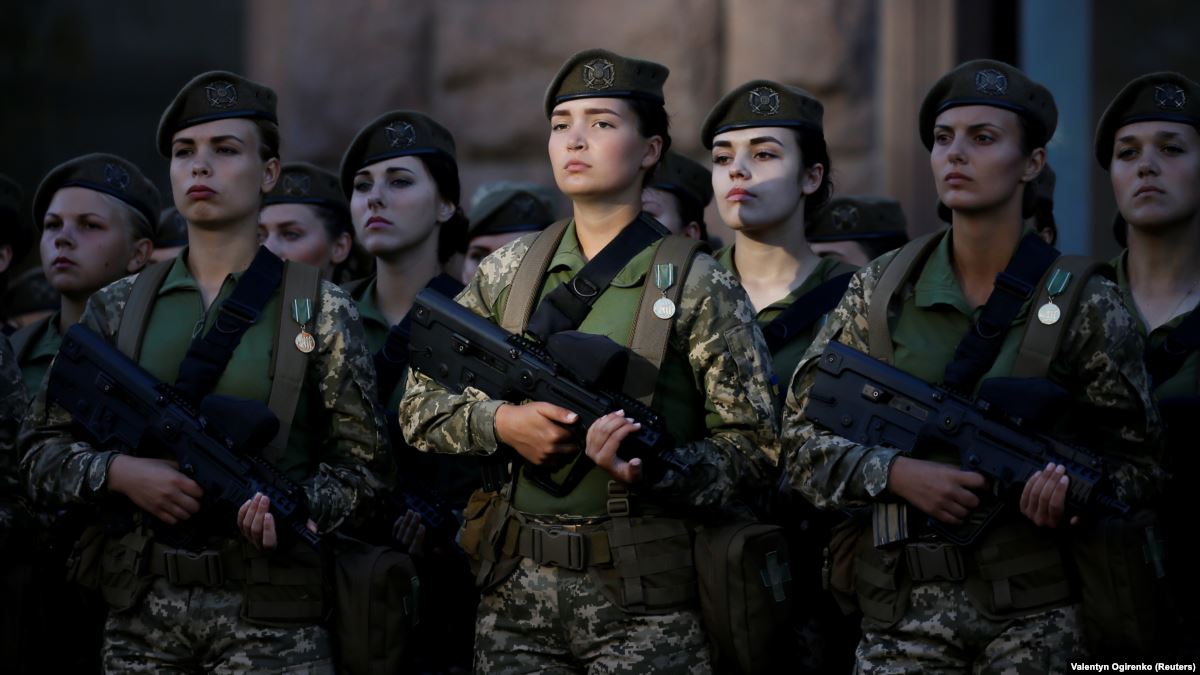
COUNTERING GENDER-BASED VIOLENCE
In July 2016, activist Nastya Melnychenko initiated a flash mob яНеБоюсьСказати (#I'mNotAfraidToSay) to make sexual violence visible. The campaign spread throughout the post-Soviet space.
A 2018 United Nations Population Fund report documented the massive scope of gender-based violence. In particular, a third of men surveyed stated that they knew one or more males who are physically abusive to their families.
On January 11, 2019, amendments to the Criminal Code and Criminal Procedure Code entered into force as part of the implementation of the principles of the Council of Europe Convention on Preventing and Combating Violence against Women and Domestic Violence (also known as the Istanbul Convention; Ukraine, unfortunately, has not ratified the Convention yet). The new legislation defines rape as “sexual activities involving vaginal, anal or oral penetration into the other person’s body with the use of genitals or any other items, committed without voluntary consent of the victim”. A note to the relevant article states that consent is deemed voluntary “when it is a result of free declaration of the will of the individual concerned, with due regard to all relevant circumstances”. The previous version of the article defined rape as “sexual intercourse with the use or threat of physical force, with threats to use physical violence or by taking advantage of a helpless condition of the victim”.
In this manner, the core principle of consent was changed drastically: the criterion of explicit non-consent was replaced by one of explicit consent. The change in the definition also means that court decisions should reject the narrow view of coercion as the use of physical force and take into account the broader context of sexual intercourse[13].
In addition, domestic violence (“the intentional systematic physical, psychological or economic violence against a spouse or former spouse or another person with whom the perpetrator is (was) in a family or close relationship, which leads to physical or psychological suffering, deterioration in health, unemployability, emotional dependence or deterioration of the quality of life of the affected person” and forced marriage (“forcing a person to marry or to prolong the forced marriage, or to enter into a cohabitation without a marriage, or to the continuation of such cohabitation, or to induce the person to move to the territory of the state other than that in which the person resides”) were criminalised.
The Criminal Code was supplemented by an additional section — XIII-1 on “Restrictive Measures” — in order to protect victims of domestic violence. Such measures may include, for example, prohibition to dwell in the place of joint residence with the victim or a restraining order (the instruction to stay a certain distance away from such place).
EDUCATION
In 2015, a task group under the Ministry of Education and Science of Ukraine was established, and the post of Advisor to the Minister of Education and Science on gender equality and anti-discrimination in education was introduced.
Sociologist Olena Strelnyk identifies two pedagogical approaches which coexist in the current Ukrainian education system, which applies a kind of ‘gender eclecticism’ logic. The gender-role approach strengthens inequalities of the sexes, while the gender approach aims to achieve gender equality.
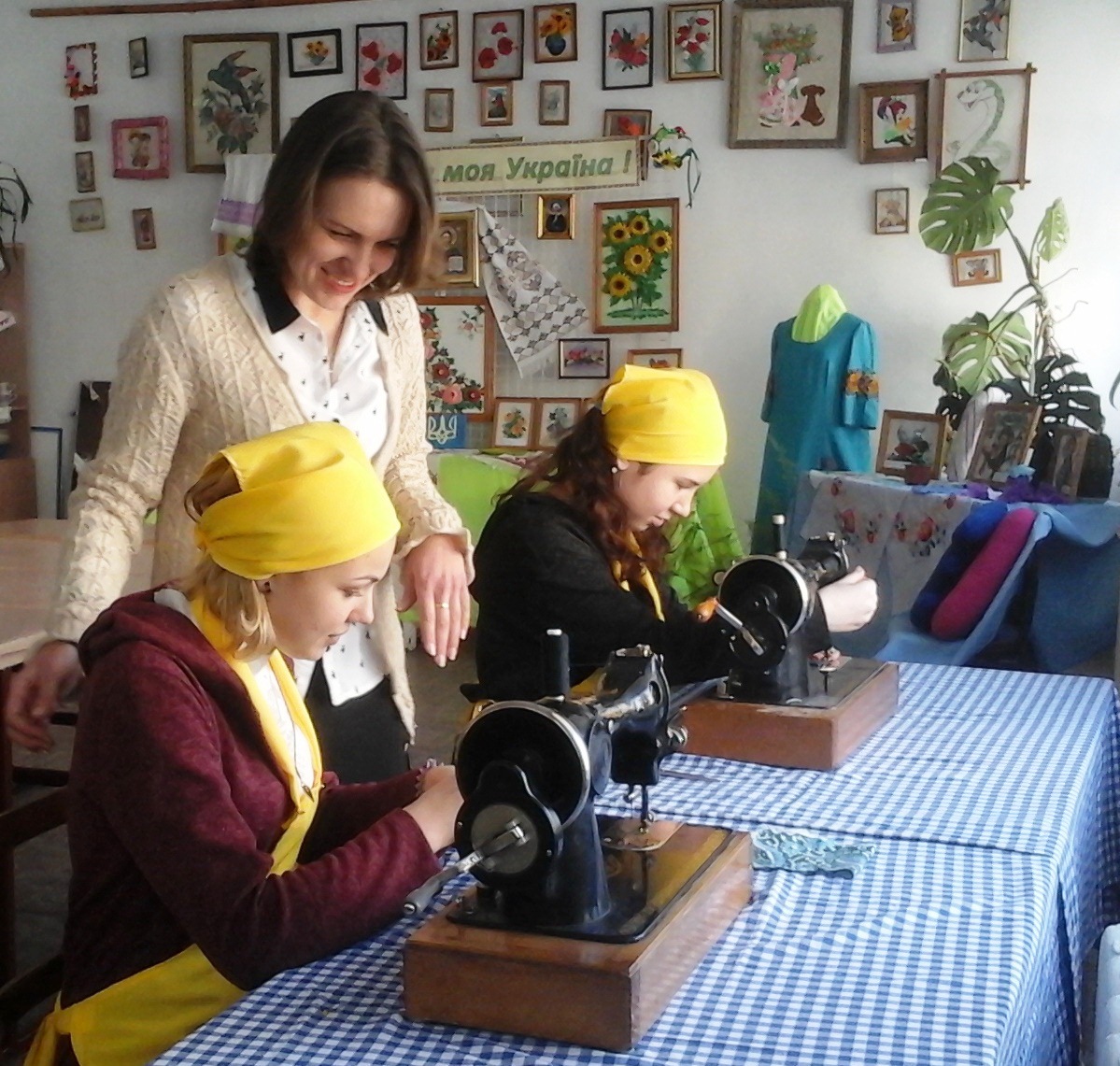
Arts and crafts class
The researcher states that the easiest way to see the difference between these approaches is to examine arts and crafts classes. A gender-role approach will have girls baking and embroidering and boys working on lathes with little encouragement to go beyond stereotypical behaviour. A gender approach implies boys and girls studying together within the same curriculum, or children freely choosing any of the activities, with non-stereotypical choices acceptable (e.g. boys can be interested in cooking and girls in woodwork).
Standards for gender-segregated education in arts and crafts were abolished in 2017. In practice, segregated lessons for girls and boys still take place, and improving the situation at the local level requires the active involvement of the teacher and parent communities.
According to the 2017 “Law on Education”, one of the principles of the state education policy is teaching respect for human rights and freedoms, intolerance towards disparagement of human honour and dignity, towards physical or mental abuse and discrimination on any grounds.
An important achievement was the institutionalisation of the anti-discrimination expert evaluation of school textbooks published at public expense. 2016 was the year of the first expert assessment of all school textbooks submitted to the Ministry of Education and Science of Ukraine competition (to obtain the “Recommended by the Ministry of Education and Science” stamp of approval). This and subsequent assessments revealed numerous cases of stereotyping and prejudices in the texts and illustrations.
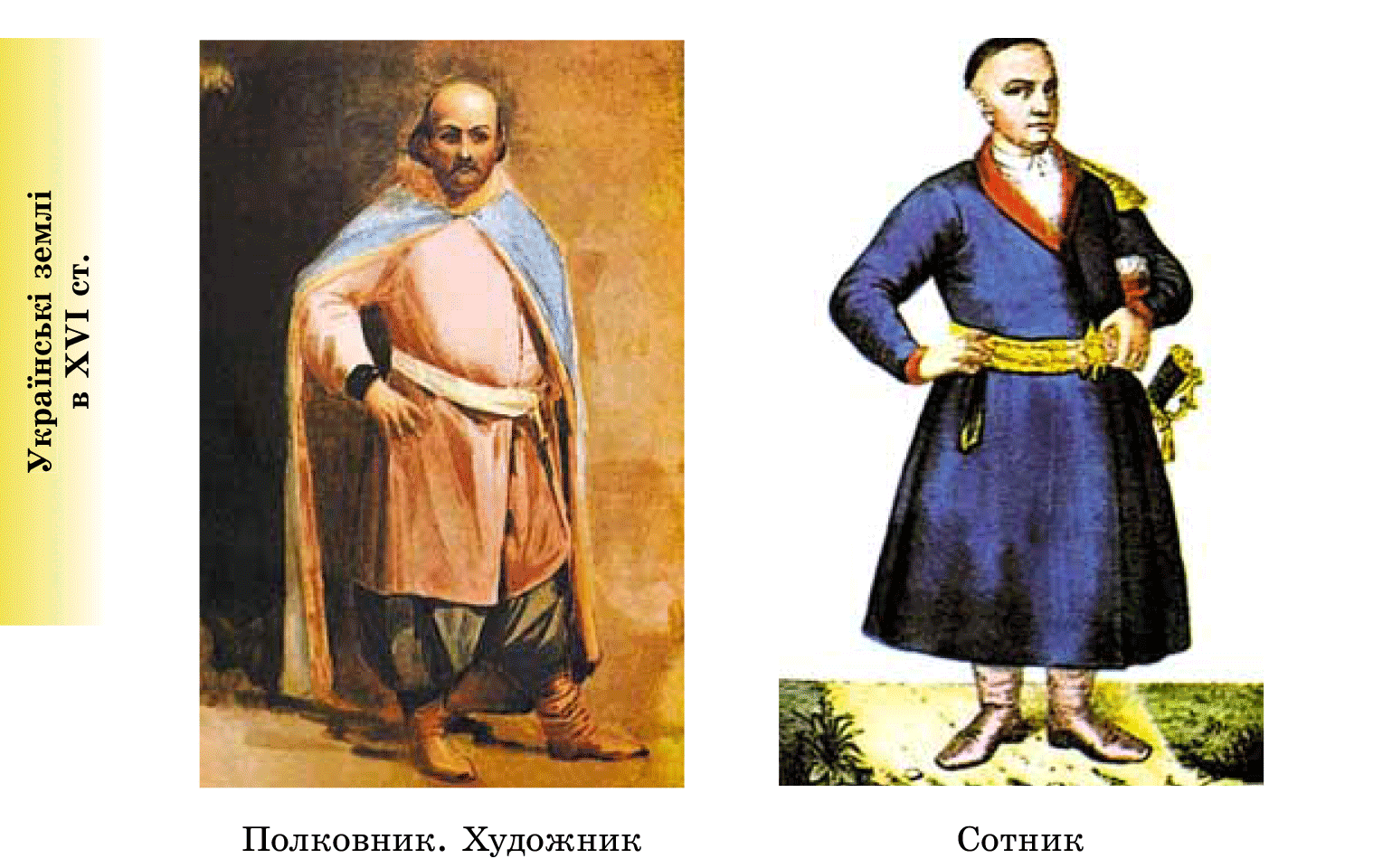
The textbook on History of Ukraine for the 8th year, ed. H. K. Shvydko, P. O. Chornobai. A prevalence of male characters is typical for many textbooks. Due to the gender discrimination inherent to illustrations in history textbooks, students are not aware of women’s contributions to history and do not even know what they looked like.
Throughout 2016–2019 845 textbooks completed a gender assessment. Monitoring of edits implemented showed positive effects: writing teams and publishing companies have become much more attentive and sensitive around stereotypes.
Non-formal education on gender equality has been developing; for example, an online course on the Prometheus platform titled “Women and Men: Gender for All” by sociologist Tamara Martseniuk has grown popular.
Ukrainian publishers more often offer books on feminist and gender topics.

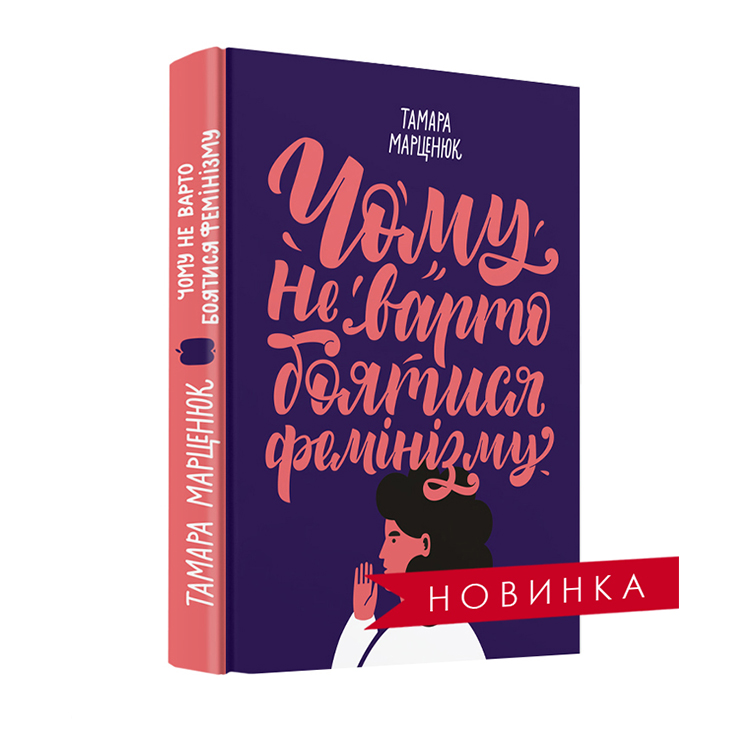
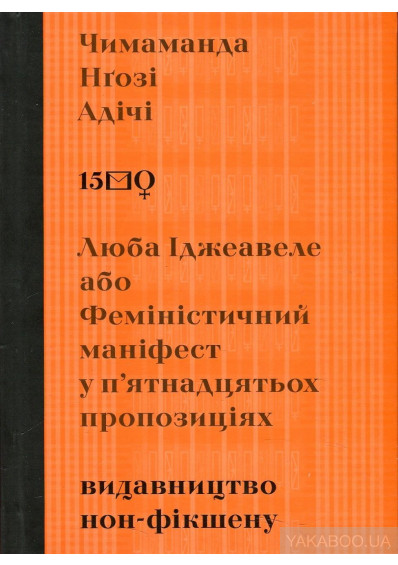
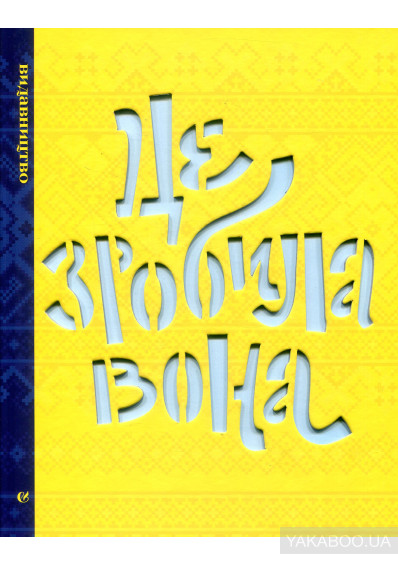
The 2019 Ukrainian spelling rules introduce gender marking in job titles. So today we hear feminine words for gender-specific job titles (for female ministers, MPs and members) instead of clumsy linguistic constructions using masculine words for females.
CULTURE
Singers alyona alyona and Stasik destroy female stereotypes.
‘Big and funny’ (if we quote her song), alyona alyona boldly breaks the cliches of rap culture, where women mostly take a back seat and have a standard sexualised appearance.
Anastasia Shevchenko (Stasik) brings the image of a tomboy — a young, masculine and aggressive woman — to the Ukrainian music scene for the first time.
We should also mention the cabaret project TseSho with female performers (although it was founded by a man) who touch upon social problems in their artistic work.
Both modern Ukrainian literature and translations of foreign books promote feminist ideas.
Haska Shyyan’s novel Behind Their Backs, awarded European Union Prize for Literature, puts the war in Ukraine in an all-European context and portrays it from a woman’s perspective. Maya and Her Moms by Larysa Denysenko and Maria Foi conveys an intersectional version of feminism in a way that elementary-school students can grasp it.
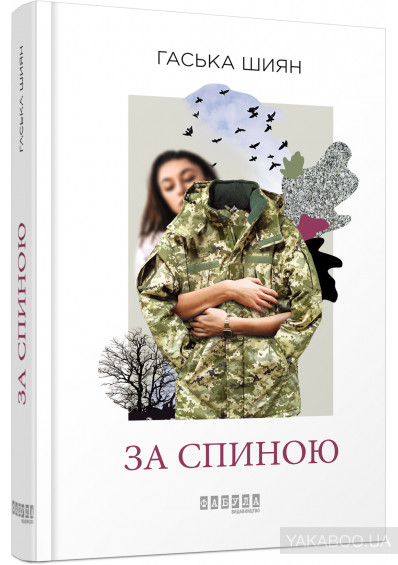

Princess Princess Ever After by Katie O'Neill rewrites the standard plot about a princess’ rescue from a dragon. Fruit of Knowledge by Liv Strömquist is a graphic novel about menstruation. Sour Apple by Jerzy Szyłak and Joanna Karpowicz speaks of domestic violence. In recent years, feminist classics such as Persepolis by Marjane Satrapi, The Handmaid's Tale by Margaret Atwood, and The Bell Jar by Sylvia Platt have been published in Ukraine.



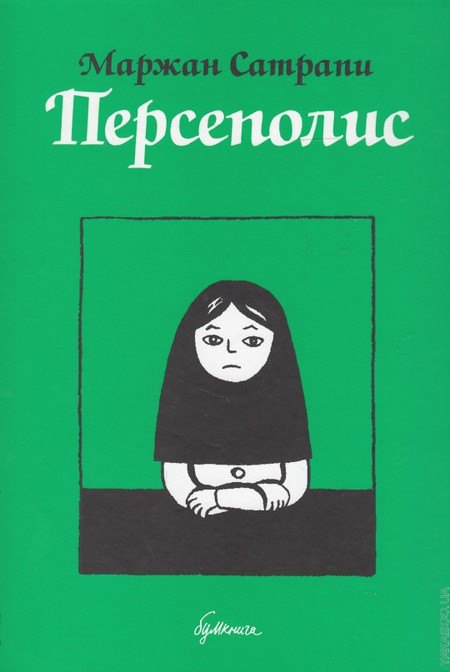

MEN
Active fatherhood is being widely discussed, including the publication of Artem Chapay’s collection of stories Dad on Paternity Leave and the introduction of Father’s Day as an official holiday in 2019 (the third Sunday of June).
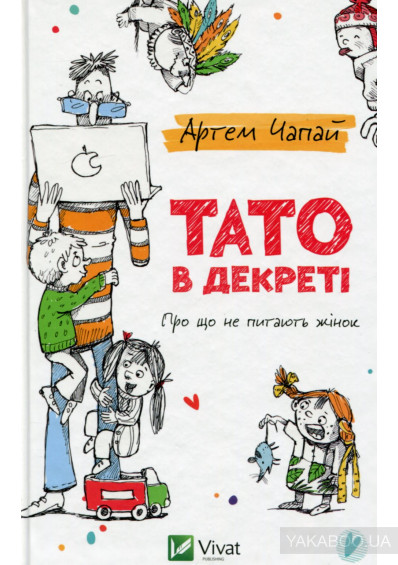
UN Women has introduced a Global HeForShe Initiative (men for gender equality). Dmytro Shurov (Pianoбой) is the campaign’s most well-known ambassador. In 2019 he released a music video highlighting the diversity of women's experiences and identities.
THE FEMINIST MOVEMENT
The grassroots feminist movement grew even stronger after 2014. The March 8 marches have been growing progressively larger and more organized.
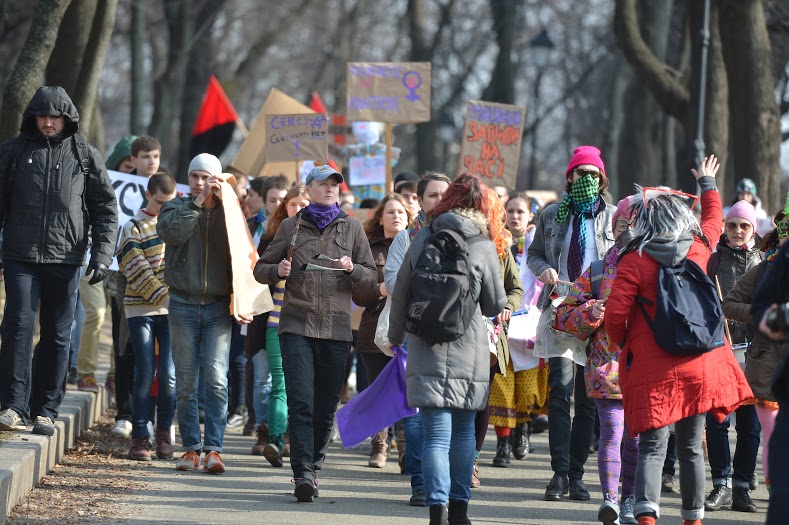
Kyiv, 2015
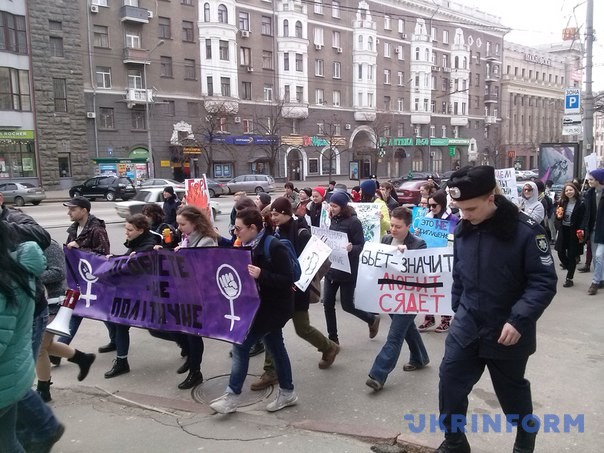
Kharkiv, 2016
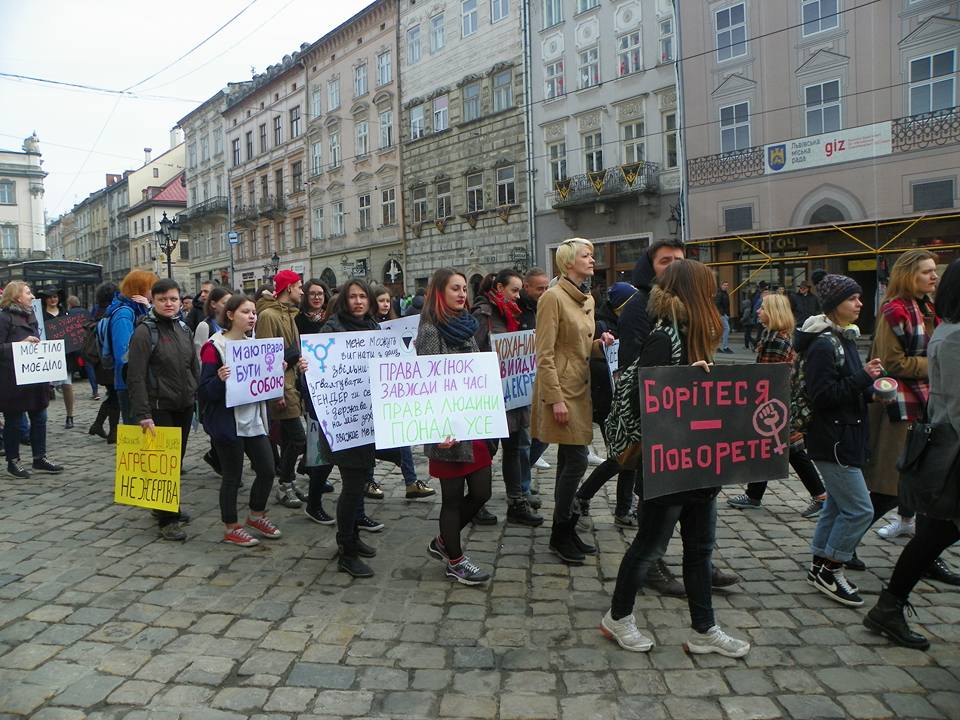
Lviv, 2017
Kyiv, 2018
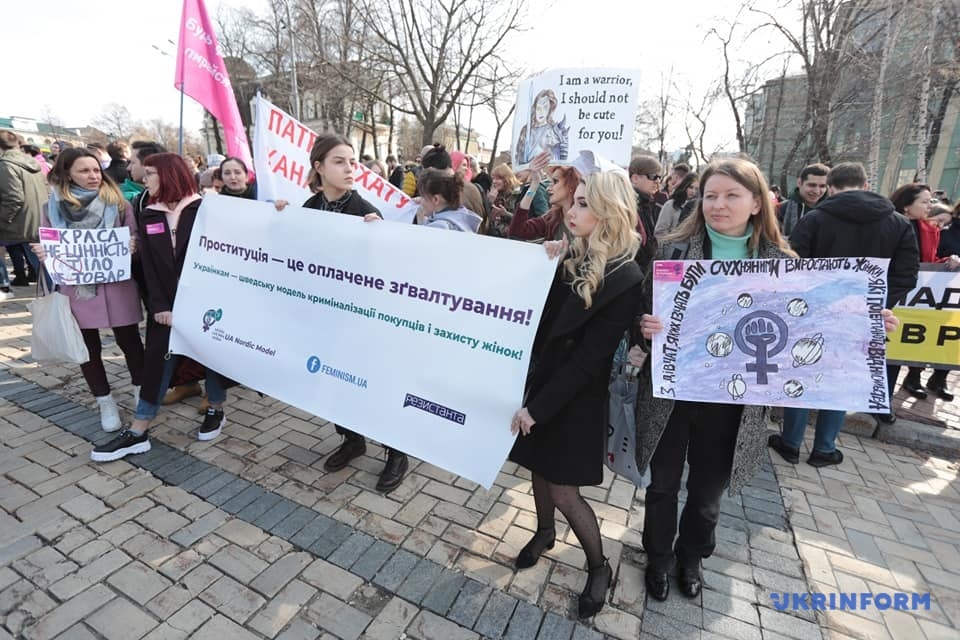
Kyiv, 2019
The reach of these demonstrations has broadened to include Kherson, Mariupol and Lysychansk in addition to the largest cities of Ukraine. The number of participants is also growing. Since 2014 the marches’ demands have become increasingly proactive. While before 2014 feminists often had to respond to conservative draft laws, such as a potential tax on childlessness, later the focus shifted from dismissing reactionary legislative initiatives to adopting progressive ones. For example, we often hear calls to ratify the Istanbul Convention. At recent marches there were representatives of female ATO veterans, Roma women and other groups with specific needs and demands.
Discover the history of celebrating March 8 in Oksana Kis’ article “Rights and Tulips: Why Do We Still Celebrate the 8th of March?”
The overall number of initiatives and the level of representation of different schools of feminism has increased. For example, there is an active debate on the need and possibility of introducing in Ukraine the so-called Swedish model of prostitution regulation (criminalisation of the client). There are feminist groups who support the initiative, while some sex worker organisations are against it. The feminist and LGBT movement includes several small anonymous queer groups.
CONCLUSIONS
Over the past few years, significant changes in Ukrainian law and public policy have brought us closer to gender equality. The challenges society faced due to the war in eastern Ukraine have formed the backdrop for rapid changes in legislation. Overall, Ukrainian society has democratised and is more ready to take the equality and emancipation of women and men for granted. The large number of grassroots initiatives in different domains of life speaks to this conclusion.
We cannot yet speak of drastic structural changes in gender relations that could be easily measured and would influence Ukraine's ranking in international gender equality studies. Nevertheless, it is obvious that the social landscape is rapidly ‘terraforming’ into a more livable space for women, and this article’s author as a woman feels much better here than before.
Translated from Ukrainian by Iryna Malishevska.
[1] http://www3.weforum.org/docs/WEF_GGGR_2018.pdf
[2] Refer to: Марценюк, Тамара. Гендерна соціологія майдану: роль жінок у протестах // https://genderindetail.org.ua/library/ukraina/genderna-sotsiologiya-maydanu-rol-zhinok-u-protestah-1341112.html
[3] Refer to: Лекція Тамари Злобіної «Гендерний розпад» // https://genderindetail.org.ua/media/video/lektsiya-tamari-zlobinoi-genderniy-rozpad-1341172.html
[4] Refer to: https://www.ndi.org/sites/default/files/Національне%20опитування%20з%20питань%20рівності%20між%20чоловіками%20і%20жінками%20в%20Україні%20липень%202018%20НДІ.pdf
[5] Refer to: https://zakon.rada.gov.ua/laws/show/322-08
[6]Refer to: Минздрав отменил перечень запрещенных для женщин профессий // https://112.ua/politika/minzdrav-otmenil-perechen-zapreshhennyh-dlya-zhenshhin-professiy-425982.html
[7] Refer to: Жінки в політиці. Рада схвалила гендерні квоти — як вони змінять парламент? // https://www.bbc.com/ukrainian/features-48637941
[8] Refer to: http://www.un.org.ua/images/documents/4463/UA%20manual%20GRB%20Analysis_PRINT.pdf
[9] В українській армії служать 20 123 жінки, — Ірина Геращенко // https://censor.net.ua/ua/news/443531/v_ukrayinskiyi_armiyi_slujat_20_123_jinky_iryna_geraschenko
[10] В українській армії служать 55 тис. жінок, — Порошенко // https://censor.net.ua/ua/news/3091255/v_ukrayinskiyi_armiyi_slujat_55_tys_jinok_poroshenko
[11] У структурі МВС працюють понад 50 тисяч жінок, — заступник міністра // https://www.radiosvoboda.org/a/news/29086732.html
[12] https://zakon.rada.gov.ua/laws/show/113-2016-р
[13] Розписка на секс не потрібна, вас обдурили // https://ua.112.ua/mnenie/rozpyska-na-seks-ne-potribna-vas-obduryly-475302.html
